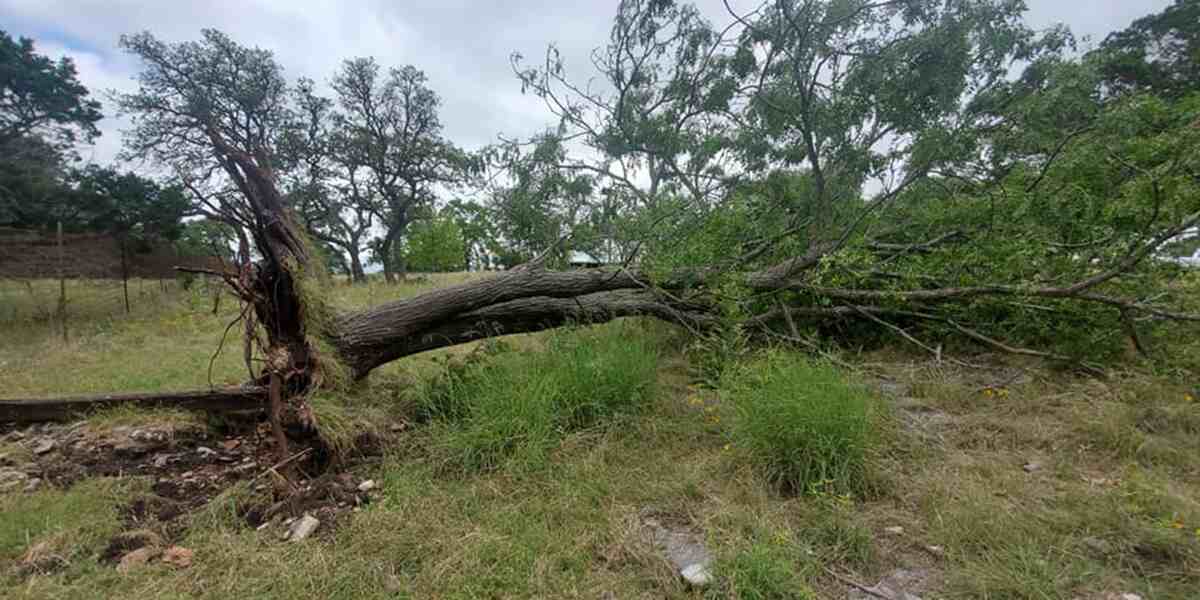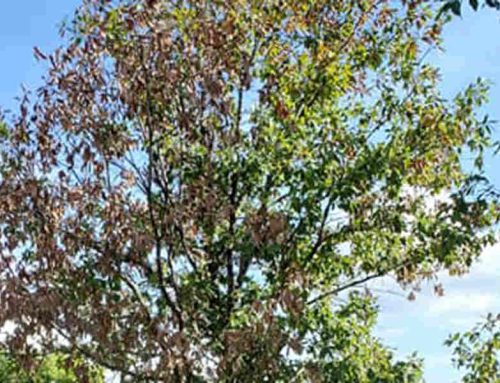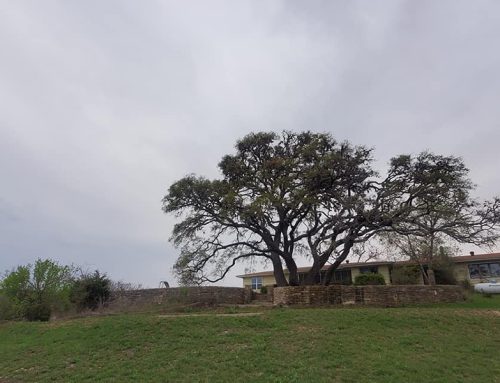Would you know the signs of tree root damage if you saw them? Rockoff Tree Solutions is an experienced ISA-certified arborist consulting in Boerne, TX, and this issue is foremost in the concerns we receive from local clients.
If you’ve discovered rotted root sections, bark damage, and fungal spores on the branches of your trees, what should you do? Below, our Texas tree care experts discuss root damage in more detail so that you can make a more informed decision.
Fungal Spores on Root Tissues Spell Trouble
When your tree has a damaged root section, it might suffer from a reduced volume of water and nutrients. It will usually sport falling leaves in summer, immature buds in spring, and crown damage throughout the year. However, one big problem our arborists see in Texas is fungal spores, which we often detect by looking for bioluminescent mushrooms on exposed roots.
Fungal species like Pythium, Cylindrocladium, Rhizoctonia, and Phytophthora will starve a tree’s roots of digested nutrients. These fungi are prevalent in many areas across Texas, clinging onto healthy roots for years while you clear away the dead branches and wilted fruits they cause. Ash, redbud, and box elders with poor access to nutrients or water are susceptible to fungal takeovers.
So, what’s the easiest preventive measure against root fungus? Try planting a bed of grass around your tree! It will starve growths like Verticillium and Armillaria of oxygen, effectively preventing them from spawning colonies.
Three Signs of Problems in Leaves, Branches, and Roots
Scorched Leaves
Traumatized roots hinder the water and nutrient intake of a tree, leading to unhealthy bark tissue and crown damage. Shriveled, browning, and scorched leaves are prevalent signs of root damage. And dehydrated trees could die in just a few months without a licensed arborist to intervene.
Branch Dieback
Branches and leaves receive sustaining nutrients from decaying matter in the soil, but unhealthy vascular tissues in your roots cannot transfer these nutrients, and the tree will starve. Chemical damage and nearby construction are also risk factors.
Branch dieback refers to a phenomenon where small and large branches fall from a tree out of season. It’s normal during dormancy every year, but seeing branches wilt in the middle of summer alerts you to a root system problem.
Rotting Roots
Roots without sufficient oxygen will break the surface looking for some. However, above-ground roots are vulnerable to damage from gardening tools, mowers, and rakes. Unfortunately, root-based wounds rot easily as they do not have the healing abilities of bark tissues.
Roots that hold the tree up run deep, mostly between two to six feet below the ground (but the record worldwide is 24 feet deep!). They act like the foundation of a skyscraper, which could tilt or sink without proper engineering. That’s why root damage is serious and could topple your tree during an adverse weather event.
Two Other Tree Issues That Need Professional Attention
Leaning and Instability
When roots do not receive enough nutrients, they weaken and dry up. Trees infected with soil-borne viruses or boring insects won’t hold up well during high winds or storms.
Reduced Growth
The roots do not digest nutrients, but they must source them from the surrounding soil. Otherwise, the tree dies. If you’re seeing poor new leaf growth, dead immature buds, or stunted branches, you may have a root problem.
A soil-quality check comes first so that you can apply the right blend of organic fertilizers on an arborist-approved schedule. If that doesn’t help, you’ll need to contact us to check for root damage.
Contact the Texas Tree Experts Today!
Is it time to hire a certified arborist for saving a damaged tree? If you’re seeing signs of root damage, schedule a free estimate with Rockoff Tree Solutions at 830-955-0304 today!




